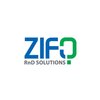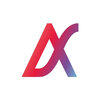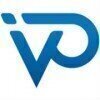
i
AVIZVA
Filter interviews by
AVIZVA Interview Questions and Answers
10 Interview questions
Safety protocols ensure a secure environment, minimizing risks and promoting health in various settings, including workplaces and healthcare.
Risk Assessment: Conducting regular assessments to identify potential hazards, such as in a manufacturing plant where machinery poses risks.
Emergency Procedures: Establishing clear procedures for emergencies, like fire drills in an office to ensure everyone knows evacuation r...
My approach to sprint planning focuses on collaboration, clarity, and adaptability to ensure team alignment and effective delivery.
Collaborate with the team: Engage all team members to gather input on capacity and priorities.
Define sprint goals: Establish clear, achievable objectives that align with the product vision.
Prioritize backlog items: Use techniques like MoSCoW or the Fibonacci sequence to rank tasks base...
ERDs are visual representations of the relationships between entities in a database.
ERDs show how different entities in a database are related to each other
They consist of entities, attributes, and relationships
Commonly used in database design and data modeling
Examples include showing the relationship between customers and orders in an e-commerce system
Identifying and fixing errors in a JavaScript code snippet is crucial for debugging and improving code functionality.
Check for syntax errors: Missing commas, brackets, or semicolons can cause issues.
Use console.log() to trace variable values and flow of execution.
Look for undefined variables: Ensure all variables are declared before use.
Verify function calls: Ensure functions are called with the correct number of ...
BRD is a document that outlines business requirements, while SRD is a document that details system requirements.
BRD focuses on what the business needs, while SRD focuses on how those needs will be met by the system.
BRD is typically created by business stakeholders, while SRD is created by technical stakeholders.
BRD is more high-level and abstract, while SRD is more detailed and specific.
Examples: BRD may state the...
Design based User Story workflow involves understanding user needs, creating design solutions, and incorporating feedback.
Understand user needs and requirements
Create design solutions based on user needs
Incorporate feedback from stakeholders and users
Iterate on designs based on feedback
Collaborate with developers to implement designs
I can add value to your existing products by improving the user experience and increasing user engagement.
Conduct user research to identify pain points and areas for improvement
Create user personas and user journeys to guide design decisions
Implement user-centered design principles to improve usability and accessibility
Incorporate feedback from user testing to iterate and improve designs
Introduce new features and ...
The designs were created with a user-centered approach, focusing on ease of use and visual appeal.
Conducted user research to understand user needs and pain points
Created wireframes and prototypes to test and iterate design solutions
Incorporated feedback from stakeholders and users to refine designs
Used a consistent visual language and typography to enhance usability
Ensured accessibility and inclusivity for all use...
The pillars of Scrum are transparency, inspection, and adaptation.
Transparency: All aspects of the process must be visible to those responsible for the outcome.
Inspection: Scrum artifacts and progress must be inspected frequently to detect variances.
Adaptation: If an inspection reveals that one or more aspects of the process deviate outside acceptable limits, adjustments must be made.
Framework innovation in Java involves creating new and improved frameworks for efficient and effective software development.
Framework innovation involves identifying areas where existing frameworks can be improved or new frameworks can be created to address specific needs.
Examples of framework innovation in Java include Spring Framework, Hibernate, and Struts.
Framework innovation can lead to faster and more effici...
AVIZVA Interview Experiences
18 interviews found
I applied via Job Portal and was interviewed in Dec 2024. There were 2 interview rounds.
What is scrum, do you use safe
(2 Questions)
- Q1. How so you do planning
- Q2. Na
(2 Questions)
- Q1. General question about healthcare
- Q2. Project work discussion
(2 Questions)
- Q1. Discussion about skills
- Q2. Hobbies discussion
Senior Business Analyst and Product Owner Interview Questions & Answers
posted on 9 Jan 2025
I applied via Job Portal and was interviewed before Jan 2024. There were 2 interview rounds.
(6 Questions)
- Q1. Can you explain your work in your last role?
- Ans.
In my last role, I worked as a Senior Business Analyst and Product Owner, leading cross-functional teams to deliver successful projects.
Led cross-functional teams to deliver successful projects
Analyzed business requirements and translated them into technical specifications
Collaborated with stakeholders to prioritize features and enhancements
Managed product backlog and sprint planning
Conducted user acceptance testing an...
- Q2. Can you explain your experience in the healthcare field and the concepts you are familiar with?
- Q3. What are Entity-Relationship Diagrams (ERDs), and what work have you done related to them?
- Ans.
ERDs are visual representations of the relationships between entities in a database.
ERDs show how different entities in a database are related to each other
They consist of entities, attributes, and relationships
Commonly used in database design and data modeling
Examples include showing the relationship between customers and orders in an e-commerce system
- Q4. What work have you done with JSON?
- Ans.
I have experience working with JSON in various projects, including data manipulation and API integration.
Used JSON for data interchange between systems
Parsed JSON responses from API calls
Stored configuration settings in JSON format
- Q5. How do you manage relationships with stakeholders?
- Ans.
I manage relationships with stakeholders by establishing clear communication channels, understanding their needs and expectations, and regularly updating them on project progress.
Establish clear communication channels to ensure stakeholders are informed and involved in decision-making processes
Understand the needs and expectations of stakeholders by actively listening and seeking feedback
Regularly update stakeholders o...
- Q6. Can you describe a critical situation you have faced in your professional experience and how you managed it?
- Ans.
I faced a critical situation when a major software release had critical bugs impacting multiple clients.
Identified the root cause of the bugs by analyzing code and logs
Prioritized and communicated with stakeholders about the severity of the issue
Worked closely with the development team to implement quick fixes and prevent future occurrences
Provided regular updates to clients and managed their expectations during the re...
(3 Questions)
- Q1. Are you willing to relocate to Gurgaon?
- Ans.
Yes, I am willing to relocate to Gurgaon for the Senior Business Analyst and Product Owner role.
I am open to relocating for the right opportunity
I have experience working in different locations
I am excited about the prospect of working in Gurgaon
- Q2. How did you handle your previous team?
- Ans.
I led my previous team by setting clear goals, providing support, and fostering open communication.
Set clear goals and expectations for the team
Provided support and resources to help team members succeed
Fostered open communication and encouraged collaboration
Recognized and rewarded team members for their contributions
Addressed any conflicts or issues promptly and constructively
- Q3. How do you handle and mitigate risk in your work?
- Ans.
I handle and mitigate risk in my work by conducting thorough risk assessments, implementing mitigation strategies, and regularly monitoring and updating risk management plans.
Conducting thorough risk assessments to identify potential risks
Implementing mitigation strategies to reduce the impact of identified risks
Regularly monitoring and updating risk management plans to address new risks or changes in existing risks
Interview Preparation Tips
I applied via Company Website and was interviewed before Nov 2023. There were 3 interview rounds.
There was a Online test Which consist Question of Javascript,OOps,Aptitude,English Grammar
all rounds are elemenatary
(1 Question)
- Q1. On the Spot one Topic Will be Given and then you have to Speak for 1 minute on that Topic
(3 Questions)
- Q1. Basic Sql Queries like join ,group by , Analytical functions etc
- Q2. Javascript Question Error Finding Code Snippet
- Ans.
Identifying and fixing errors in a JavaScript code snippet is crucial for debugging and improving code functionality.
Check for syntax errors: Missing commas, brackets, or semicolons can cause issues.
Use console.log() to trace variable values and flow of execution.
Look for undefined variables: Ensure all variables are declared before use.
Verify function calls: Ensure functions are called with the correct number of argum...
- Q3. Behavioral and Situation based Questions
I applied via LinkedIn and was interviewed in Aug 2023. There were 3 interview rounds.

(1 Question)
- Q1. Pillars of Scrum
- Ans.
The pillars of Scrum are transparency, inspection, and adaptation.
Transparency: All aspects of the process must be visible to those responsible for the outcome.
Inspection: Scrum artifacts and progress must be inspected frequently to detect variances.
Adaptation: If an inspection reveals that one or more aspects of the process deviate outside acceptable limits, adjustments must be made.
(2 Questions)
- Q1. If one of your team members is not appearing in Daily Stand up, what would you do?(Yes the interviewer "Daily Standup" even though that term is not used anymore.)
- Q2. What is workflow of Design based User Story?
- Ans.
Design based User Story workflow involves understanding user needs, creating design solutions, and incorporating feedback.
Understand user needs and requirements
Create design solutions based on user needs
Incorporate feedback from stakeholders and users
Iterate on designs based on feedback
Collaborate with developers to implement designs
Skills evaluated in this interview
Aptitude test topics are number systems and age related
Array and string is the main topics
I applied via Recruitment Consulltant and was interviewed in Mar 2023. There were 5 interview rounds.

1st round was assessment: you will be given online assessment test which will be around 30- 60 mins longs. Question will be asked related to your technology.
(1 Question)
- Q1. 2nd round will be technical
(1 Question)
- Q1. 3rd round was more about to know about you
(1 Question)
- Q1. 4th round they will tell you more about the company, the benefits, the culture they are following and you expected compensation
I applied via Job Portal and was interviewed before Apr 2023. There were 3 interview rounds.
DSA easy level to medium Leetcode
(1 Question)
- Q1. Coding Questions, Java ,SpringBoot Questions
(1 Question)
- Q1. Why this company? Situation based questions
I applied via Recruitment Consulltant and was interviewed in Nov 2022. There were 5 interview rounds.

It was a metal test where 30 questions are asking in 1 hour.
(1 Question)
- Q1. Basically, basics of any programming language is checked where in some scenario based questions can be put up and you need to write the business logics.
(1 Question)
- Q1. Basics questions are asked like challenges in career and how anyone could have survived in those scenarios. Apart from that some performance analysis what anybody had achieved in their past experiences.
(1 Question)
- Q1. Salary is discussed along with the condition of individual wherein they can put up their consolidated reason for the adk they have. Believe Avizva is one of the best organization in terms of anyone's salar...
Interview Preparation Tips
I applied via LinkedIn and was interviewed before May 2023. There was 1 interview round.
(1 Question)
- Q1. What is the difference between BRD and SRD ?
- Ans.
BRD is a document that outlines business requirements, while SRD is a document that details system requirements.
BRD focuses on what the business needs, while SRD focuses on how those needs will be met by the system.
BRD is typically created by business stakeholders, while SRD is created by technical stakeholders.
BRD is more high-level and abstract, while SRD is more detailed and specific.
Examples: BRD may state the need...
Top trending discussions






AVIZVA Interview FAQs
The duration of AVIZVA interview process can vary, but typically it takes about less than 2 weeks to complete.
Tell us how to improve this page.
AVIZVA Interviews By Designations
- AVIZVA Scrum Master Interview Questions
- AVIZVA Development Engineer Interview Questions
- AVIZVA Associate Trainee Interview Questions
- AVIZVA Java Developer Interview Questions
- AVIZVA Test Engineer Interview Questions
- AVIZVA Designer Interview Questions
- AVIZVA Senior Business Analyst Interview Questions
- AVIZVA Senior Database Developer Interview Questions
- Show more
Interview Questions for Popular Designations
Overall Interview Experience Rating
based on 19 interview experiences
Difficulty level
Duration
Interview Questions from Similar Companies
AVIZVA Reviews and Ratings
based on 127 reviews
Rating in categories
5-10 Yrs
₹ 20-25 LPA
4-8 Yrs
Not Disclosed
3-5 Yrs
₹ 10-17 LPA
|
Development Engineer
51
salaries
| ₹8 L/yr - ₹14 L/yr |
|
Business Analyst
21
salaries
| ₹7 L/yr - ₹19 L/yr |
|
Senior Software Engineer
21
salaries
| ₹11.2 L/yr - ₹30 L/yr |
|
Software Developer
20
salaries
| ₹6.3 L/yr - ₹12.5 L/yr |
|
Associate Development Engineer
18
salaries
| ₹7 L/yr - ₹8 L/yr |
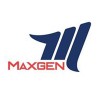
Maxgen Technologies
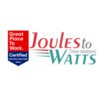
JoulestoWatts Business Solutions

Value Point Systems
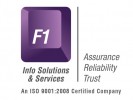
F1 Info Solutions and Services
- Home >
- Interviews >
- AVIZVA Interview Questions


